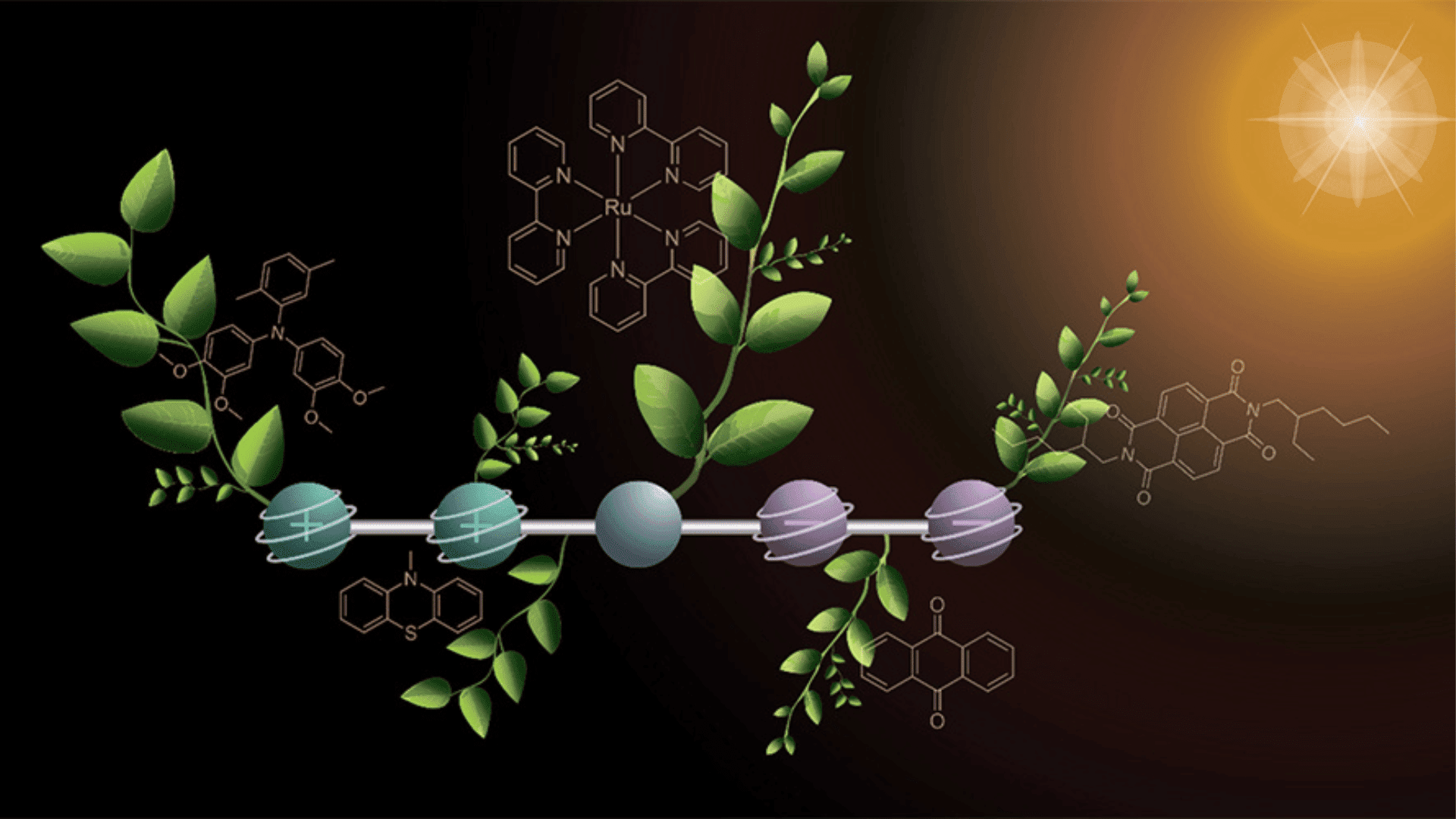Plants transform sunlight into fuel, creating oxygen in the air we breathe. This magical process is called photosynthesis. A team of chemists at the University of Basel believes the same biological process could be turned into a man-made molecule. They reportedly designed a molecule that can store energy from sunlight to provide a clean, carbon-neutral fuel.
A New Molecule’s Potential for Carbon-Neutral Fuels

Professor Oliver Wenger and doctoral student Mathis Brändlin led the study. The researchers created a five-part molecule that can hold four charges at once—two positive and two negative. It’s similar to a microscopic solar panel. According to the researchers, when a beam of light hits the molecule’s central component, it starts a chain reaction.
One part of the molecule gives up an electron, becoming positive, while another part grabs it and becomes negative.
Remarkably, the team found a way to double the process with a second flash of light, enabling the molecule to store four charges. Researchers call this method a game-changer because it allows the molecule to work with dimmer light, a major step toward using everyday sunlight instead of powerful, impractical lasers. Brändlin said, “We are already moving close to the intensity of sunlight.”
“In addition, the charges in the molecule remain stable long enough to be used for further chemical reactions,” Brändlin added.
While this molecule isn’t a complete solution for artificial photosynthesis yet, it’s a crucial piece of the puzzle. It shows that we can mimic nature’s most fundamental energy processes to create fuels that don’t harm the planet.
Their work uses nature as a blueprint to build a cleaner, brighter future.
“We have identified and implemented an important piece of the puzzle,” Professor Wenger concluded, “We hope that this will help us contribute to new prospects for a sustainable energy future.”







